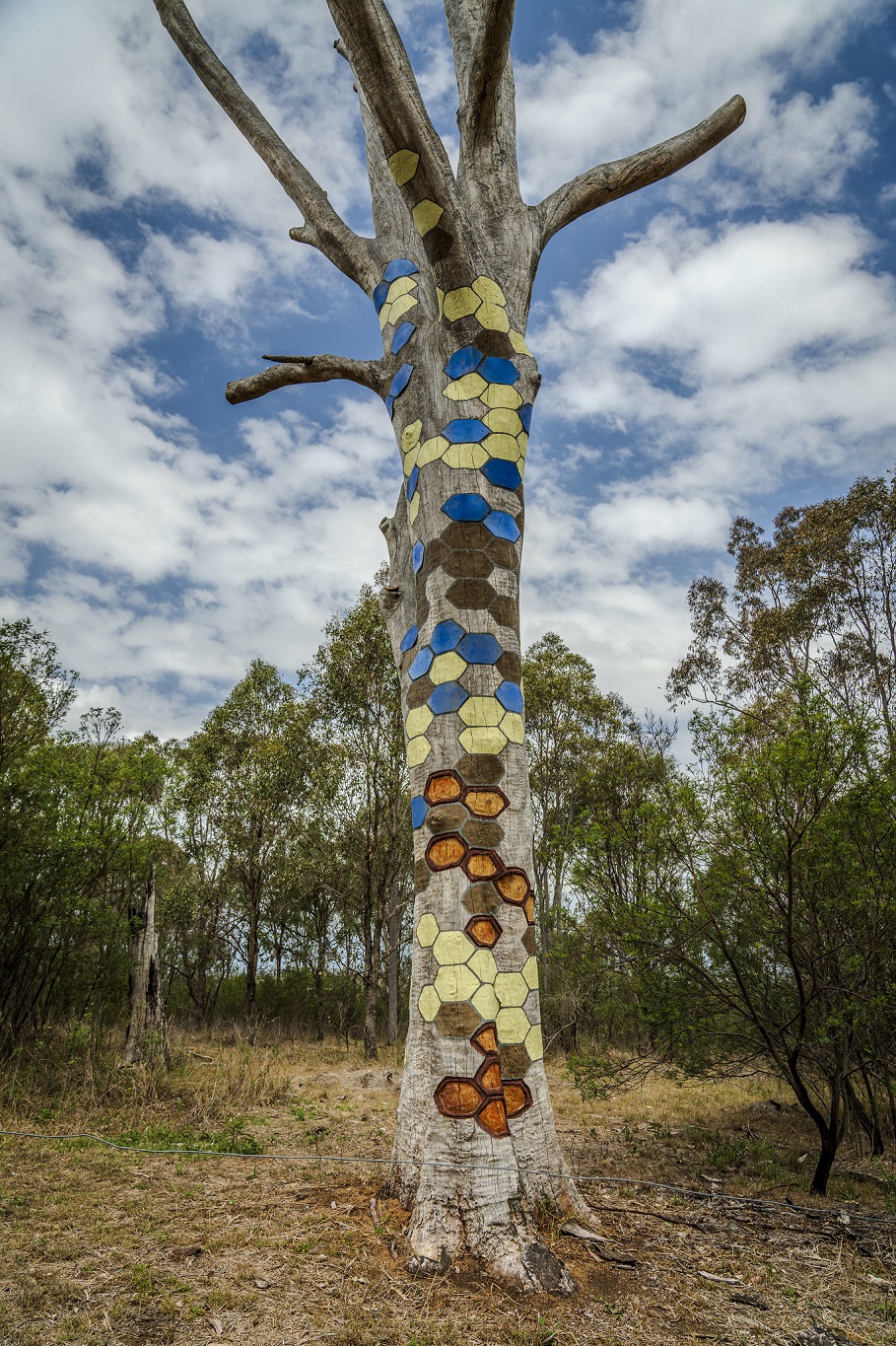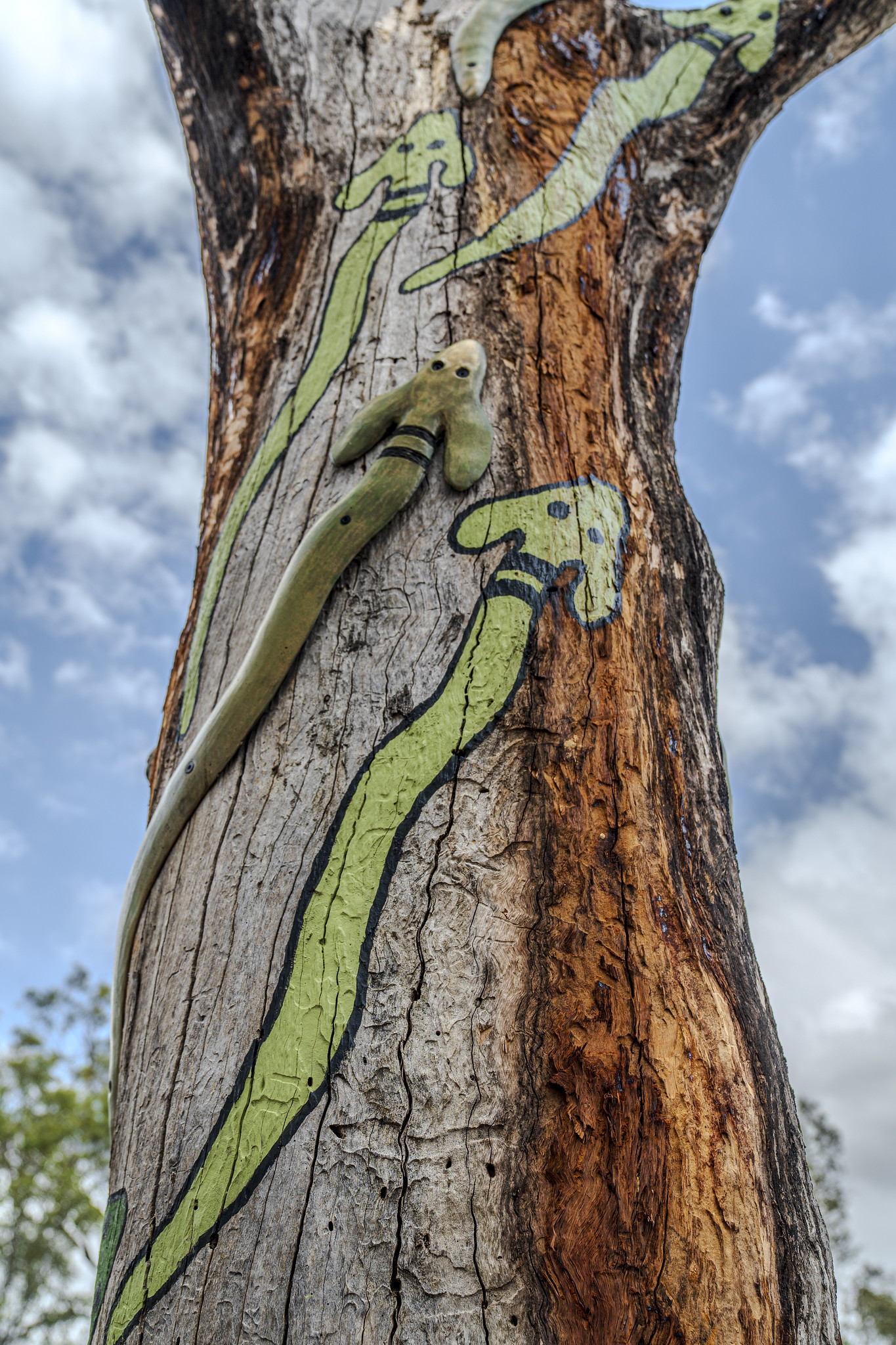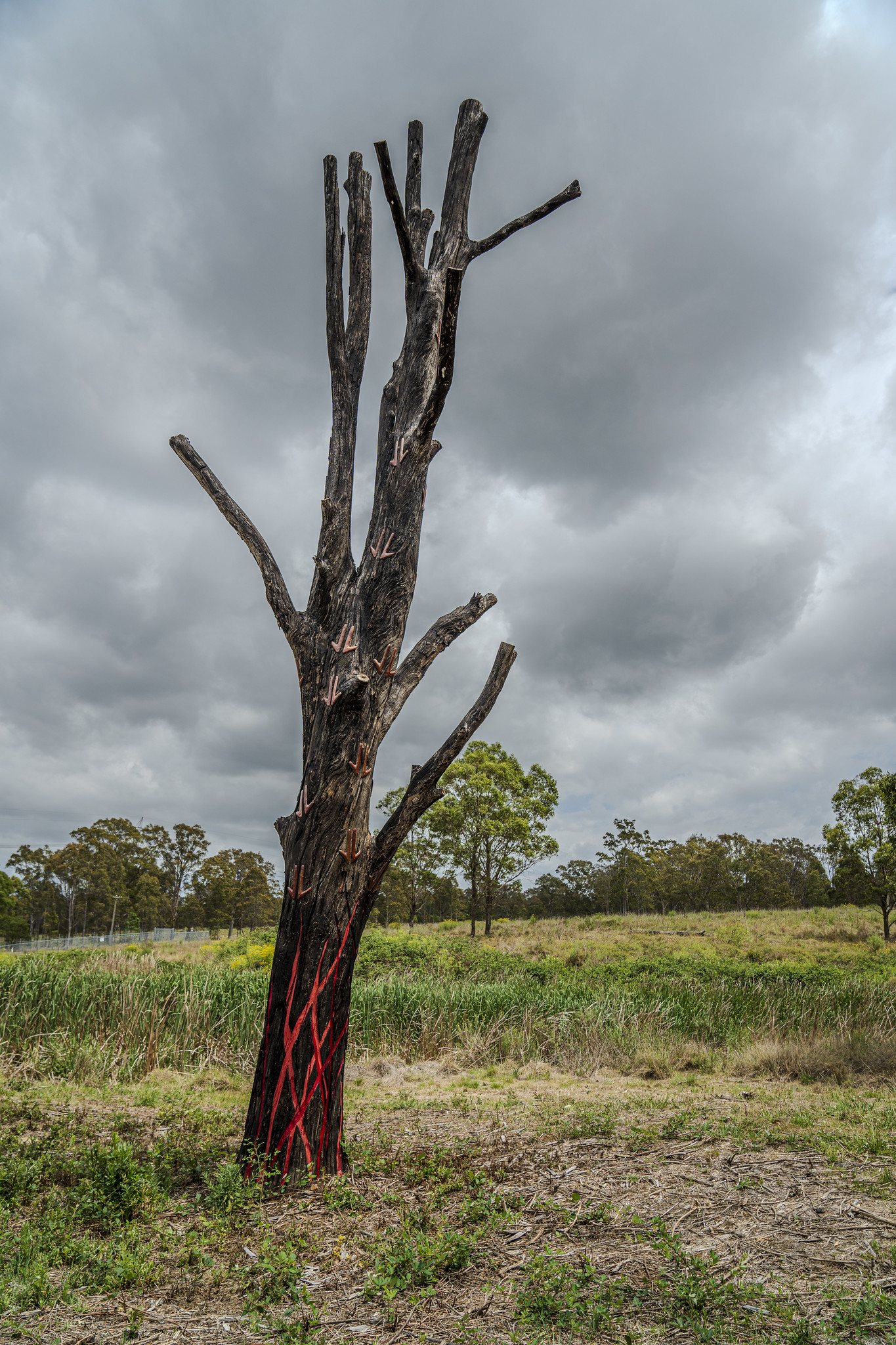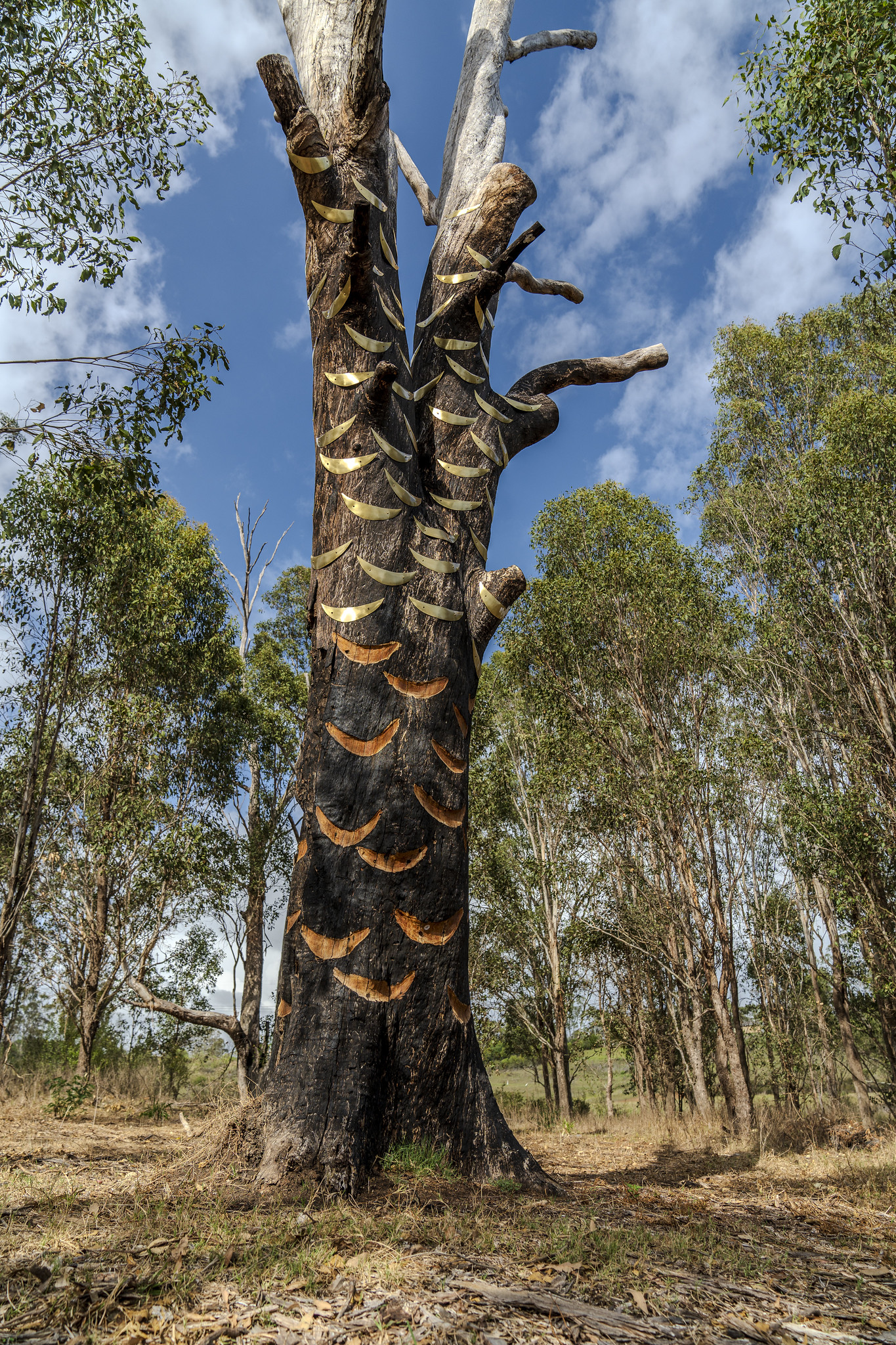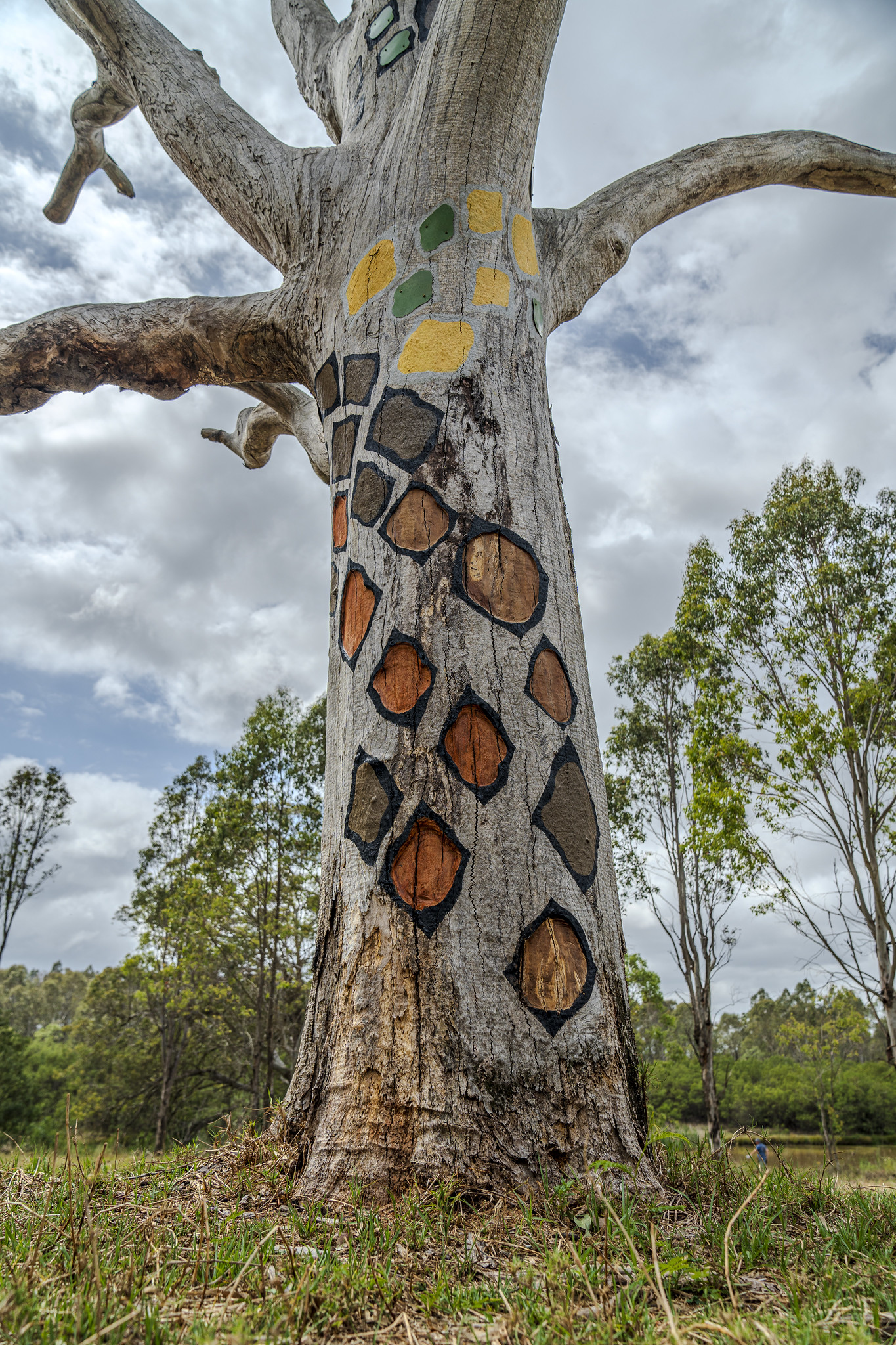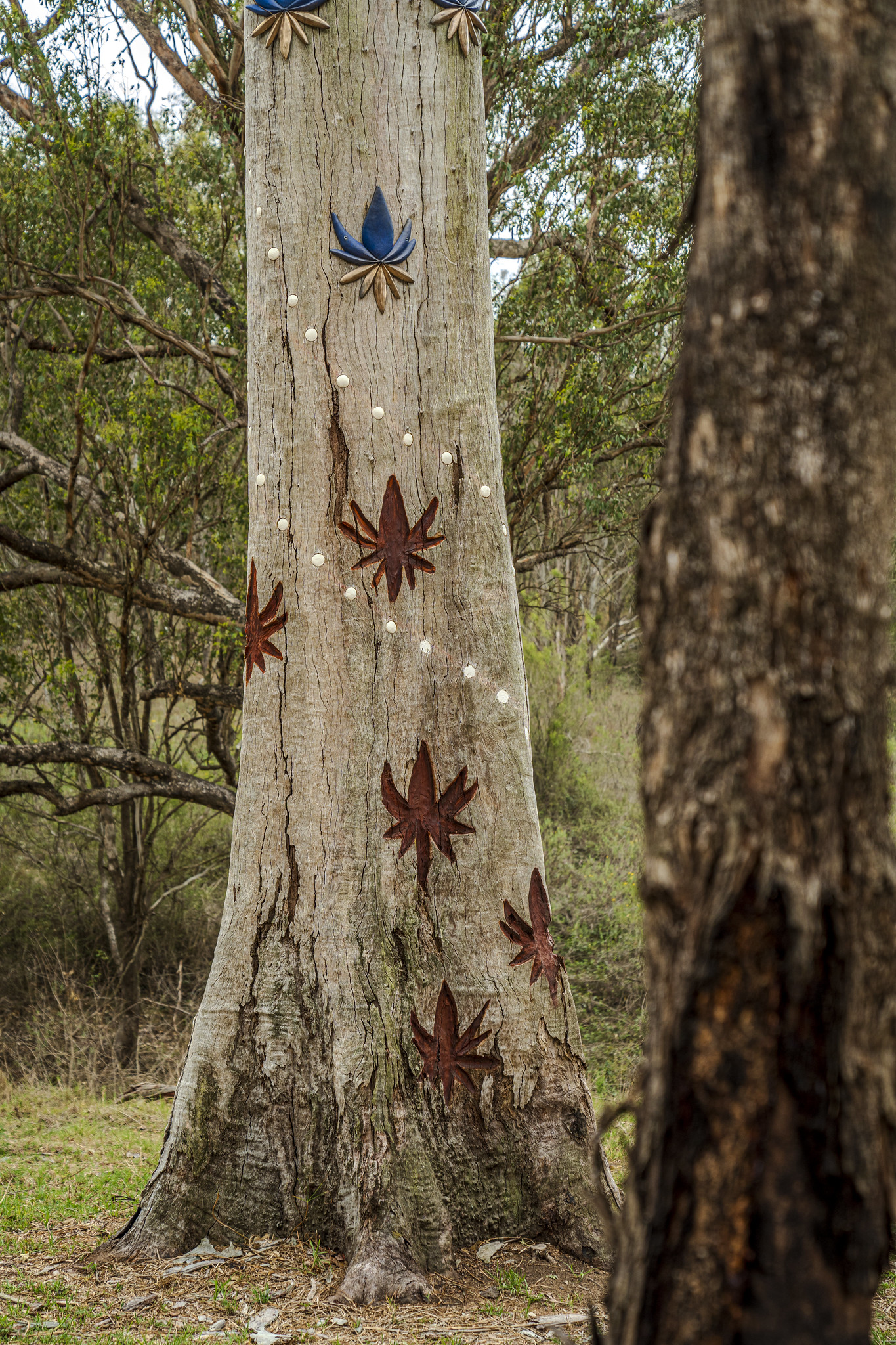Bayin Gura - cool getting warmer
Around November – December
Bayin (cool)
Gura (warm)
The dianella plant blooms at the beginning of the warmer summer months. Its flower has a blue/purple and yellow pattern.
Dianella leaves can be dried and wet again to make them easier to bend and weave into string, nets, bags, baskets and traps. The berries are a popular bush tucker food (do not eat too many though). They are also used to make purple colour dye.
Artwork by Shay Tobin, Djon Mundine, Jamie Eastwood, Balarinji, Corina Wayali Gili Norman and Venessa Dyubi Gili Possum

